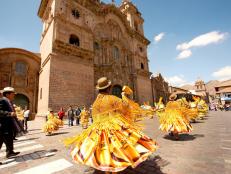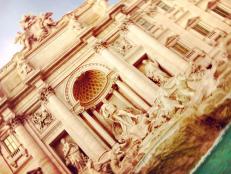5 Best Mardi Gras Celebrations Not in New Orleans
Big Easy alternatives worth checking out.
With over-the-top parades, festive music and delicious king cake, it’s easy to see why New Orleans is synonymous with Mardi Gras. You may be surprised to learn, however, that Fat Tuesday, the French translation of Mardi Gras, is actually just one day in a much longer celebration known as Carnival, which spans from the Epiphany (January 6) to Ash Wednesday (the first day of Lent).

©iStockphoto.com/jcarillet
New Orleans has hosted an official Mardi Gras parade nearly every year since 1837, with only 13 cancellations due mostly to war. With a yearly attendance around 1.4 million, it’s the largest Mardi Gras celebration in the United States. Size isn’t everything though. Cities around the globe celebrate Carnival in their own special way and we’ve highlighted five of the most unique below.
1: Mobile, Alabama

Carol M. Highsmith/Buyenlarge/Getty Images
If you head two hours east from New Orleans you’ll land in Mobile, Alabama, the original home of Mardi Gras in the United States. Mobile’s first Fat Tuesday celebration took place in 1703 and the first masked ball began the following year. At that time, Mobile was the capital of French Louisiana but due to fear of hurricane damage, the capital was moved to New Orleans along with the Mardi Gras tradition in 1718. Nearly 150 years later, the Mardi Gras celebration returned to Mobile and it’s now the second largest Fat Tuesday gathering in the country.
2: Venice, Italy

Bridget Davey/Getty Images
Estimated to have originated in the 12th century, Venetian Carnival draws millions of visitors each year. The festival is perhaps best known for the elaborate masks worn and sold on the streets of Venice. The expressive masks were worn during Carnival as early as the 13th century and they remain a symbol of the city to this day. The highlight of the Venetian Carnival is the Maschera piu Bella contest, which takes place in Saint Mark’s Square. In the weeks leading up to Mardi Gras, masked contestants dressed head-to-toe in decorative costumes are judged by a panel of experts and the winner is chosen on Fat Tuesday.
3: Nice, France

Valery Hache/AFP/Getty Images
With a history that dates back to 1294, the original Carnival celebration is located in sun-soaked Nice, France. Nice Carnival is the premiere winter event on the French Riviera and draws over a million people each year. The celebration, which has a different theme every year, lasts for 15 days and visitors are treated to an array of floats and over 1,000 musicians and dancers from around the world. Not to be missed are the flower battles in which mimosas, gerberas and lilies are tossed to spectators from decorated floats.
4: Binche, Belgium

Marc Dozier/Getty Images
The Carnival of Binche is one of Europe’s oldest surviving street carnivals (dating back to the 14th century) and in 2003, it was recognized as an “Intangible Cultural Heritage of Humanity” by UNESCO. The town begins celebrating several weeks before Ash Wednesday but the carnival officially begins on the Sunday before and culminates on Mardi Gras when masked men known as Gilles parade through town in their traditional costumes consisting of wooden clogs, wax masks and ostrich-feather hats. After the dressing ceremony in the early hours of Mardi Gras, the Gilles lead a procession through town with musicians, dancers and other costumed participants in tow. The highlight of the day, though, is in the evening when the Gilles head to Binche’s Grand Place to dance under a fireworks display.
5: Rio de Janeiro, Brazil

Buda Mendes/Getty Images
Known as the Carnival capital of the world, Rio de Janeiro welcomes approximately 500,000 visitors every year looking to experience one of the most colorful and artistic celebrations in the world. Rio Carnival is a five-day celebration that begins with the Rio mayor handing an oversized key to the city to someone dressed as King Momo (a mythical character based off Greek mythology and Brazilian folklore). The party takes over the city and eventually culminates with the Samba Parade at the Sambodromo, a stadium specifically built in 1984 for this event. The parade is essentially a competition between samba schools (social clubs with their own colors, flag and supporters) that involves months of preparation. The highly orchestrated events takes places over the span of a few days and schools are judged in 10 categories with the results being revealed on Ash Wednesday.










